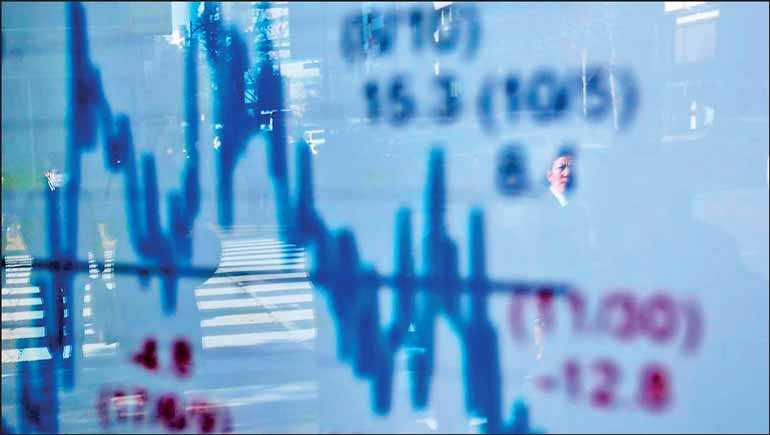Monday Apr 21, 2025
Monday Apr 21, 2025
Friday, 23 August 2019 00:00 - - {{hitsCtrl.values.hits}}

SYDNEY (Reuters): Asian shares drifted off on Thursday as uncertainty over the outlook for both US interest rates and the chance of global fiscal stimulus sucked the life out of markets.
Not helping was a fresh slide in the Chinese yuan to an 11-year low, which dealers said prompted defensive buying from state-owned banks.
In early European trades, the pan-region Euro Stoxx 50 futures slipped 0.2% as did London’s FTSE futures. Germany’s DAX futures eased 0.3% while France’s CAC 40 futures were off about 0.4%.
The S&P 500 e-minis were down 0.16%.
MSCI’s broadest index of Asia-Pacific shares outside Japan fell 0.5% in light volumes.
Japan’s Nikkei ended a touch higher while Shanghai blue chips climbed 0.3%. Hong Kong’s Hang Seng index was among the biggest losers, down more than 1% as unrest in the Chinese-ruled territory disrupt business and investment.
Investor focus is next on a range of manufacturing surveys from across the globe later in the day and risks are they will show a further slowdown in activity, especially in Europe.
“These will be the first major economic releases for August and will be closely watched, especially given the focus on growth and the global collapse in yields,” analysts at JPMorgan said in a note.
Japan’s flash PMI showed factories and exports remained subdued in July, though service activity expanded at the fastest pace in almost two years.
Overnight, minutes of the Federal Reserve’s July meeting showed policymakers were deeply divided over whether to cut interest rates, but united in wanting to signal they were not on a preset path to more easing.
Indeed, while a “couple” of Fed members favored a deeper cut of half a point, “several” favoured no change at all.
That reluctance did not seem to gel with the market’s aggressive pricing for more than 100 basis points of easing by the end of 2020.
Treasuries were sold in response and two-year yields were left at 1.558%, compared with last week’s low of 1.467%.
“The key message from the Fed minutes is that the 25 basis-point cut in July was just a calibration, a mid-cycle adjustment and not the start of a new easing cycle,” said Rodrigo Catril, a senior FX strategist at National Australia Bank.
Hopes for U.S. fiscal stimulus also got a knock when President Donald Trump reversed course and said he was not looking at cutting payroll taxes.
Second-guessing Powell
Much now depends on how dovish Fed Chair Jerome Powell chooses to be in his Jackson Hole speech on Friday.
“The most sensitive comments will revolve around whether Powell is willing to reaffirm a view that the easing cycle is a ‘mid-cycle adjustment’ or align more closely to market thinking,” said Alan Ruskin, macro strategist at Deutsche Bank.
“If he sticks to the old language as is most likely, it would affirm that he is still confident that the strength of consumption, in combination with modest Fed easing, will be sufficient to keep the recovery broadly on track.”
That would be more hawkish than expected and would likely lift the dollar further, he said.
The dollar had already bounced overnight, and was last at 98.311 against a basket of currencies from a low of 97.948. It also reached 106.60 yen from Wednesday’s trough of 106.21.
The euro edged back to $1.1091 from a top of $1.1107, not helped by a gloomy economic outlook from Germany’s finance ministry.
The European Central Bank will release minutes of its last policy meeting on Thursday and markets are looking for more detail on exactly when and how aggressively it might ease policy.
In commodity markets, spot gold drifted off to $1,498.6 from a recent high of $1,534.3.
Brent crude futures eased 12 cents to $60.18, while US crude fell 3 cents to $55.65 a barrel.